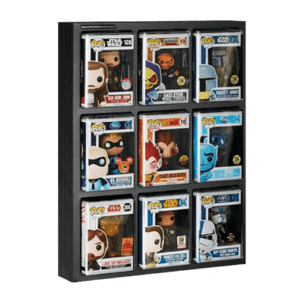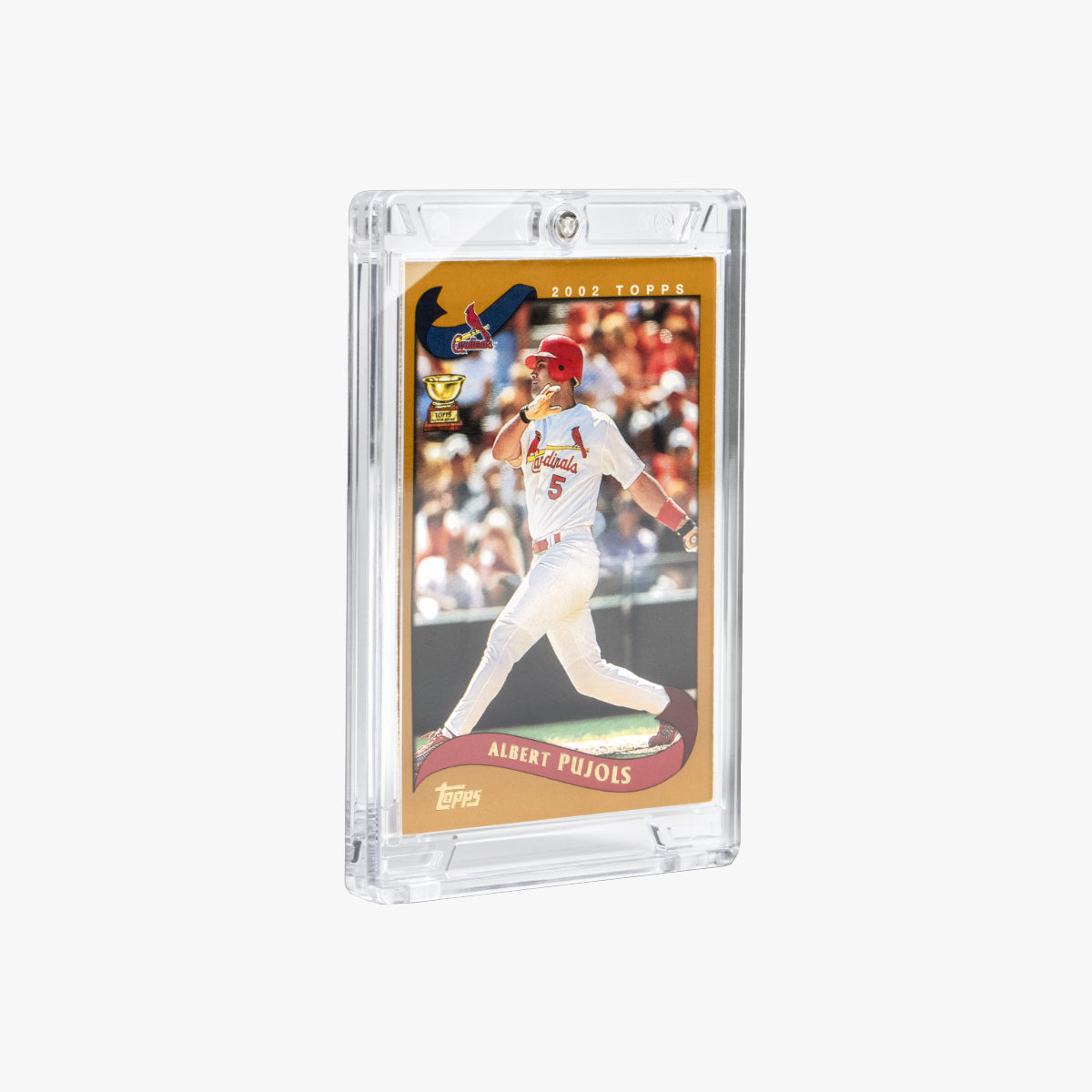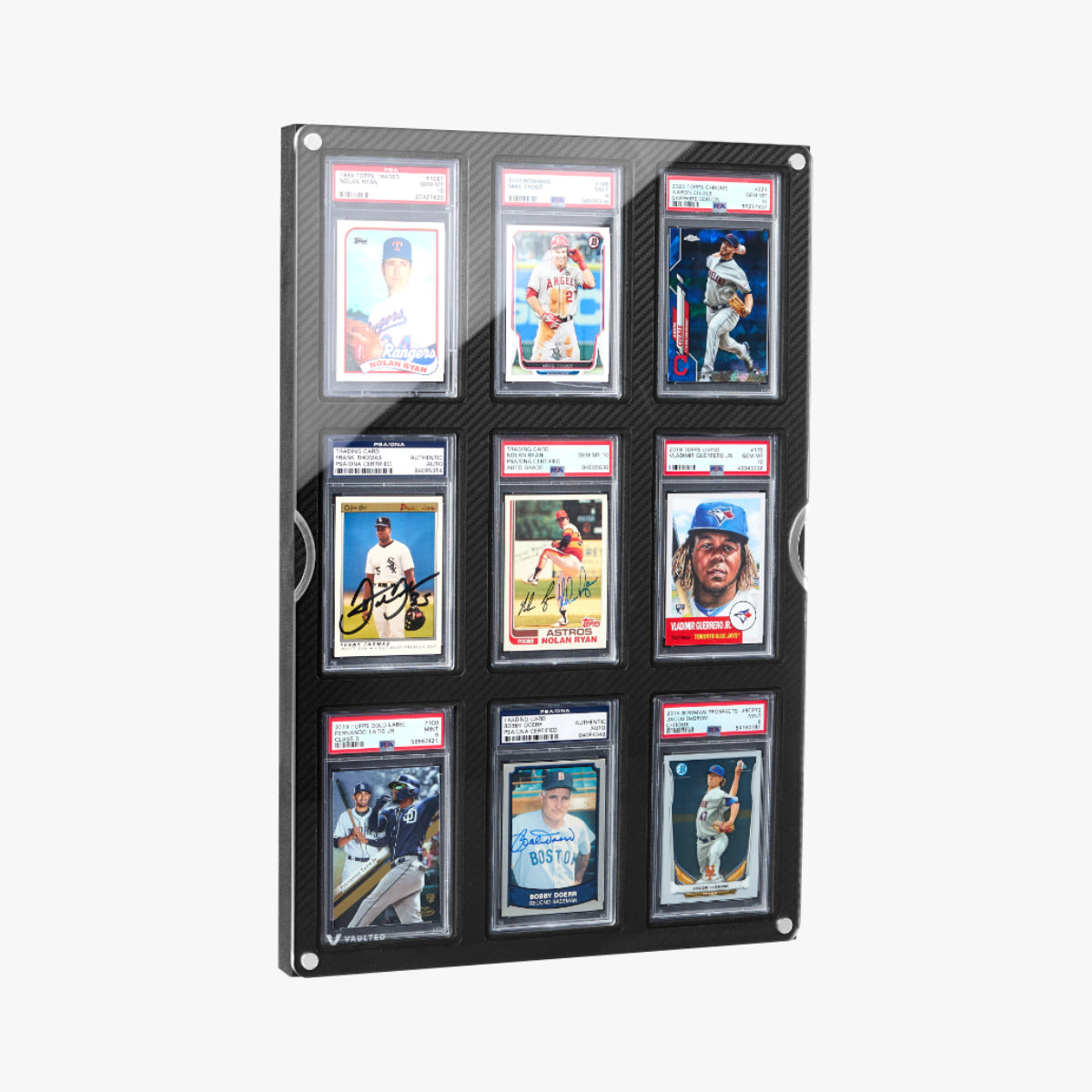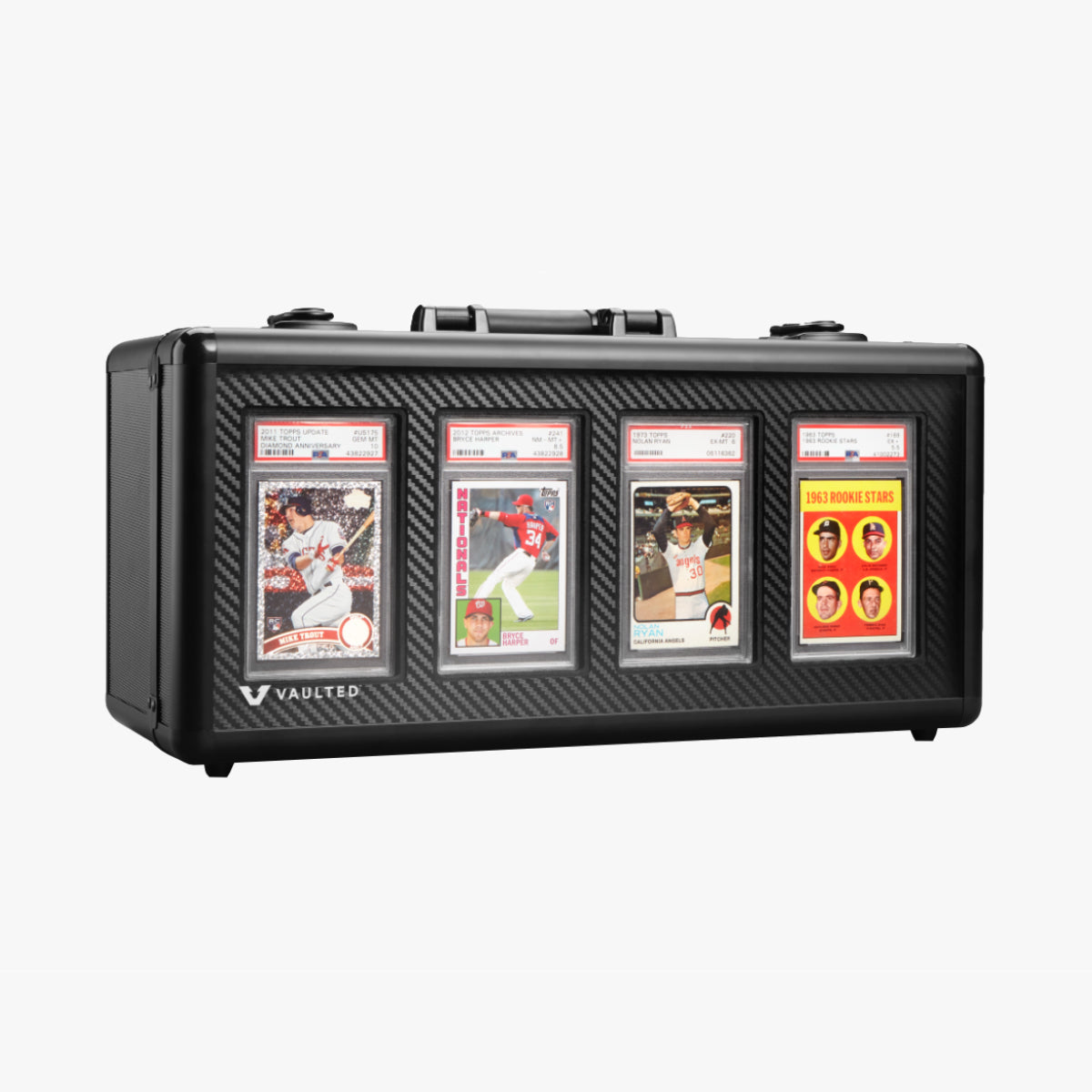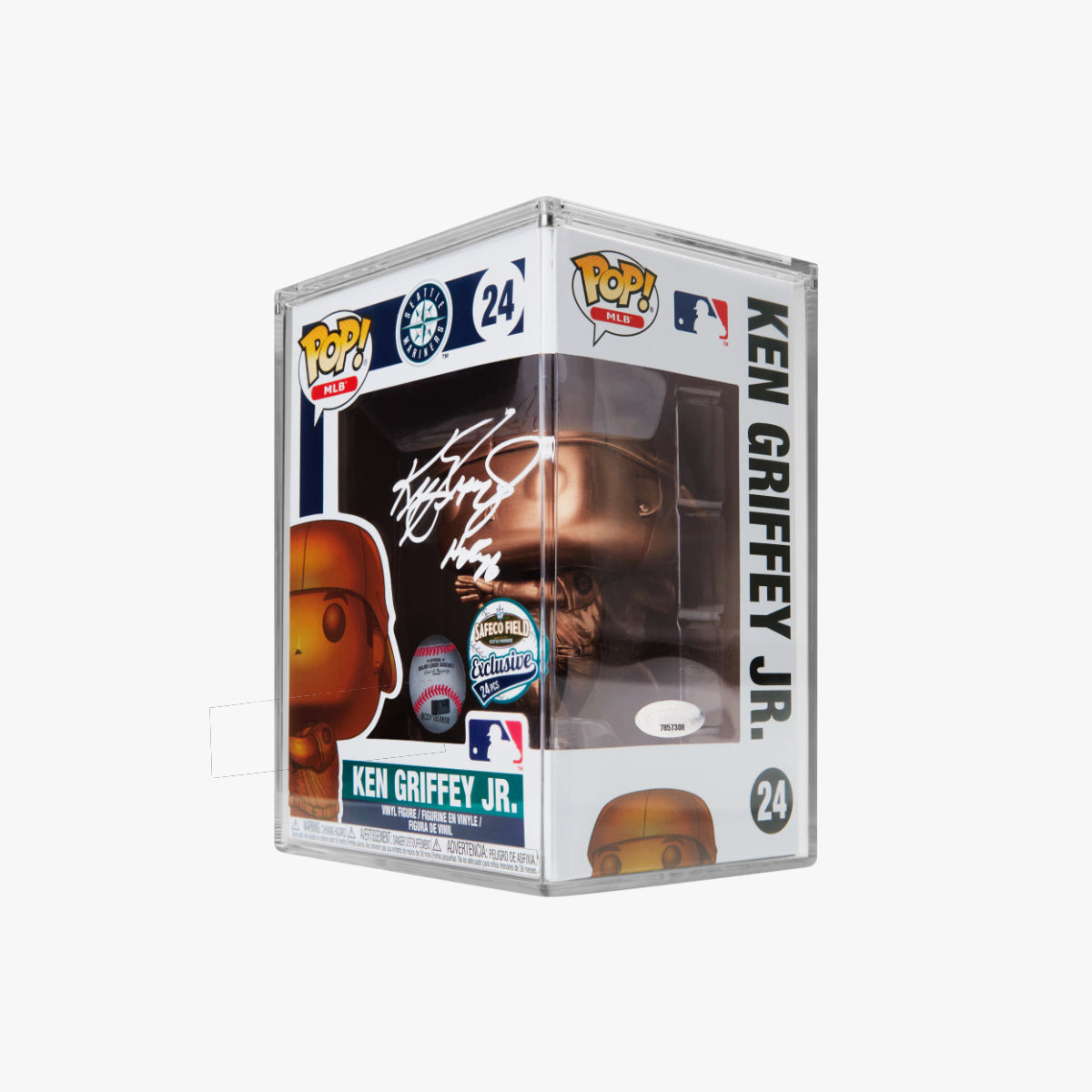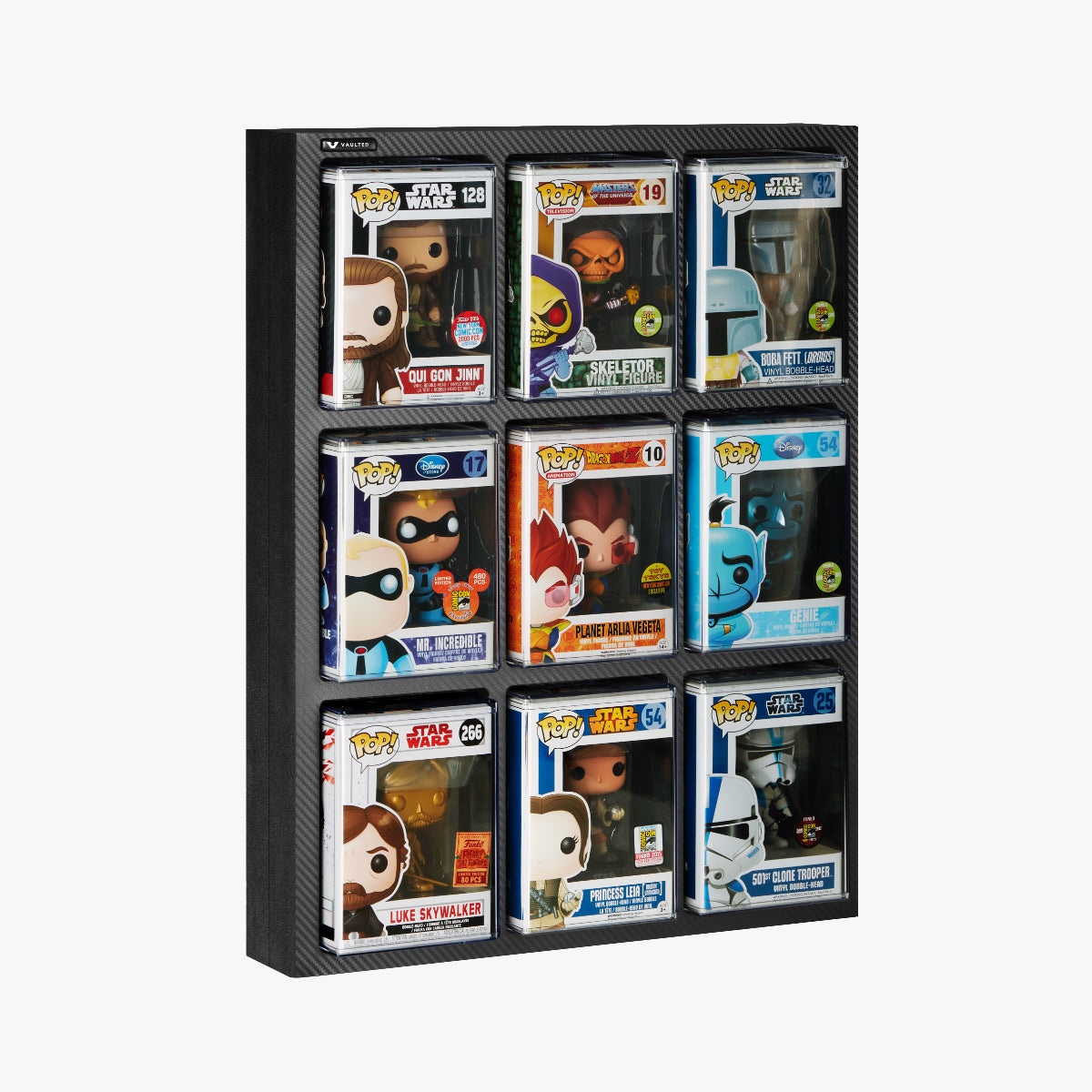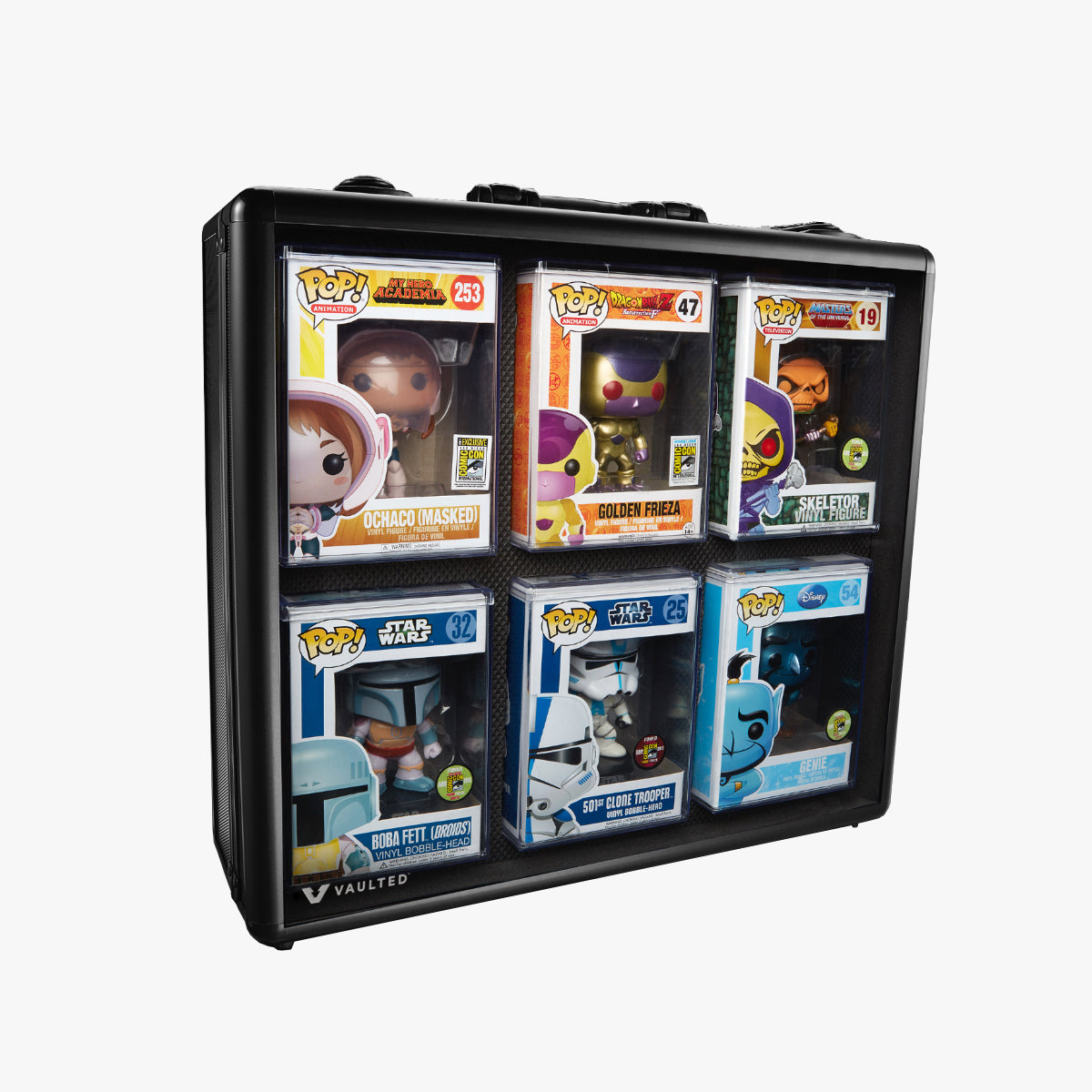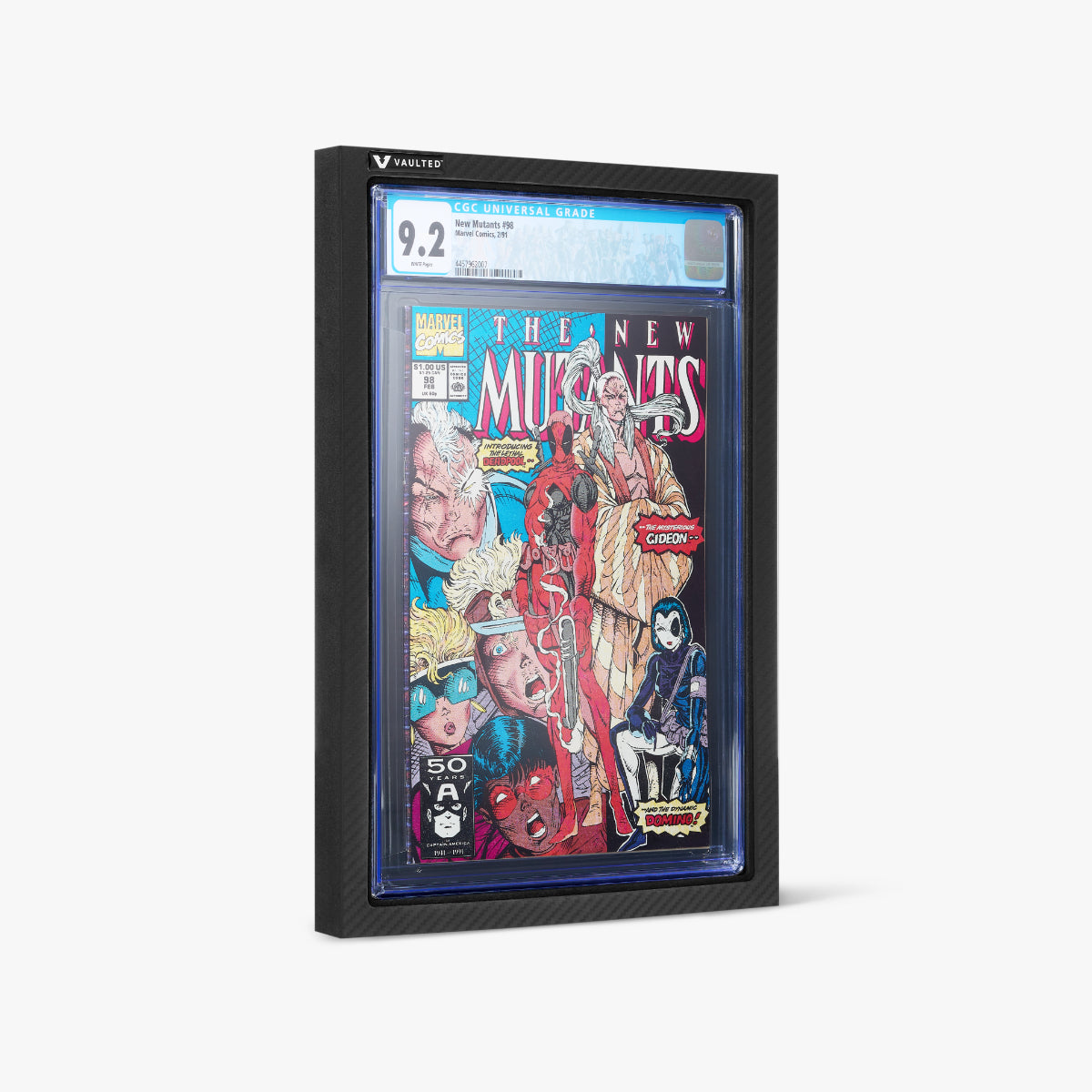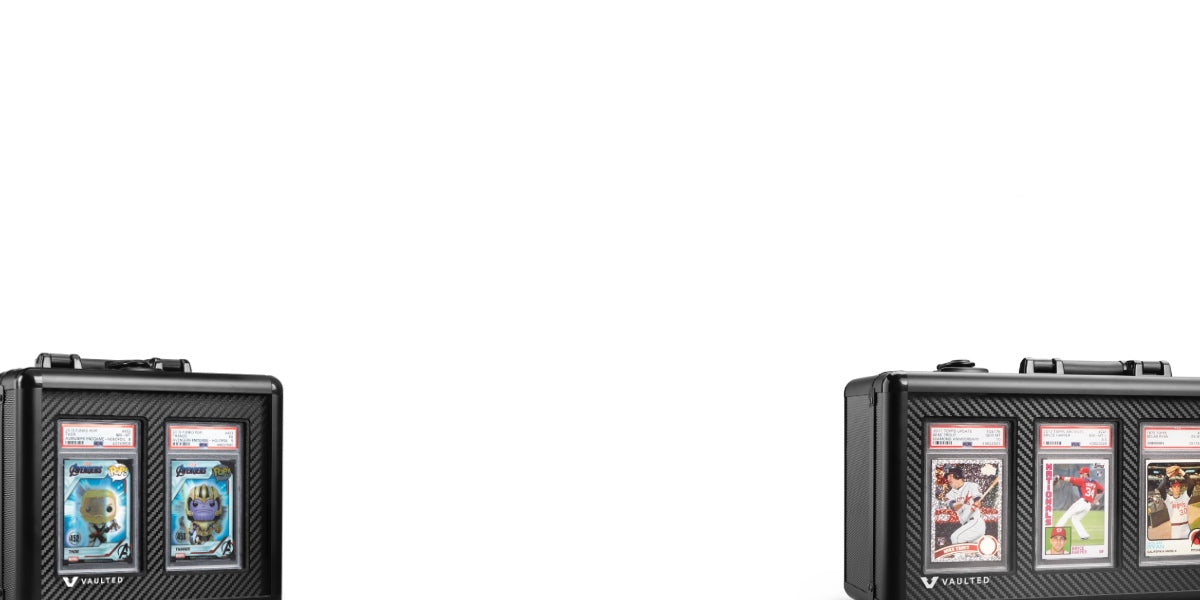The Ultimate Guide to Trading Card Grading and Display
Collecting trading cards is more than just a hobby—it's an art form, a passion, and for many, a lucrative investment. Whether you're a seasoned collector or just starting out, understanding the intricacies of card grading is essential. This comprehensive guide will walk you through the main aspects, offering valuable tips and information that can be useful for both trading card grading and pokemon card grading, as well as
In this guide, you'll learn about the critical factors that professionals consider when grading cards, such as centering, corners, surfaces, and edges. You'll also discover valuable tips on maintaining your cards in top condition and the additional considerations to keep in mind before sending your cards off for grading.
But that's not all. We'll also show you how to display your graded cards in the best possible way, ensuring they not only stay protected but also look stunning on display. Whether you're looking for a sleek card storage box or an elegant display solution, we have you covered. Ready to elevate your trading card knowledge? Dive in and discover everything you need to know about card grading and display, ensuring that your collection is both beautiful and valuable.

What is Card Grading?
Card grading is a professional evaluation process that assesses the condition and authenticity of trading cards. This evaluation is performed by specialized third-party services, which examine various aspects of the card and assign a numerical grade, typically ranging from 1 (poor) to 10 (gem mint). The graded card is then sealed in a protective plastic holder, complete with a label detailing the card's title, authenticity, and grade.
Importance of Card Grading
- Standardization: Card grading provides a standardized measure of a card's condition, making it easier for collectors and investors to compare cards accurately.
- Value Enhancement: Graded cards often have higher market value compared to their ungraded counterparts, especially when they receive high grades.
- Protection: The encapsulation process protects the card from physical damage, ensuring its condition remains unchanged.
- Authentication: Grading services verify the authenticity of the card, adding a layer of security and trust for buyers and sellers.
Key Factors in Card Grading
Understanding the elements that go into card grading is crucial for collectors and investors. Here are the main factors that professional graders consider when evaluating trading cards:
Centering
Centering is the alignment of a card's image within its borders. This factor plays a crucial role in determining the card's grade. A perfectly centered card has equal border widths on all sides, creating a balanced and aesthetically pleasing appearance. While perfect centering is rare, significant misalignment can lower a card's grade considerably. Graders measure the borders from left to right and top to bottom, and although a card does not need perfect 50/50 centering to achieve a high grade, noticeable off-centering will detract from its overall value.
Corners
The condition of a card's corners is one of the most scrutinized aspects in the grading process. Sharp, pristine corners are essential for a high grade. Even minor imperfections such as rounding, fraying, or slight bends can significantly impact the card's grade and value. Graders meticulously inspect all four corners from both the front and back, ensuring there are no signs of wear or damage. This examination is particularly stringent for older cards, where corner wear is more common and can be more pronounced.
Edges
The edges of a card are another critical factor in grading. Clean, sharp edges free from chipping, whitening, or other forms of damage are necessary for maintaining a card's condition and value. Graders examine the edges under magnification to detect any imperfections that might not be visible to the naked eye. Cards with dark borders are especially prone to showing edge wear, making any damage more noticeable and more heavily penalized in the grading process.
Surface
The surface of a card, including both the front and back, is evaluated for any scratches, indents, creases, print defects, and other blemishes. The condition of the surface is crucial as it directly affects the card's visual appeal and structural integrity. Graders use magnification to thoroughly inspect the surface, looking for common issues like fingerprints, scratches, and creases. Cards with glossy finishes or foil elements are particularly susceptible to surface damage, making this aspect of grading especially important.
Autographs
For cards featuring autographs, the quality of the signature is also graded based on its condition, clarity, and placement. A well-preserved, bold autograph can significantly enhance a card's value. Graders assess the autograph separately from the card, checking for smudges, fading, and whether the signature is on-card or a sticker. Only "out of pack" autographs, those included as part of the original card production, are eligible for grading. Clear, vibrant signatures typically receive higher grades and add considerable appeal to the card.
Factors to Consider Before Grading
Condition
The state of a card is paramount when considering grading. Even cards that were produced in large numbers can become significantly more valuable if they are in pristine condition. There is a point at which the value of a card does not increase substantially unless it is in excellent shape. Assessing the card involves checking for perfect centering, sharp corners, clean edges, and an unmarred surface. Cards that are in impeccable condition tend to attract higher prices and greater interest from collectors.
Availability
Availability is driven by the principle of supply and demand. Even cards that are widely available can see an increase in value if they are highly sought after. As demand for a particular card increases, its availability decreases, making it more valuable to collectors.
Desirability
Desirability pertains to the overall appeal of a card or player to collectors. For instance, cards of legendary players like Mickey Mantle and Mike Trout are far more coveted than those of lesser-known players. The popularity of the player significantly impacts the card's desirability and market value.
Liquidity
Liquidity measures how quickly and easily a card can be sold for its market value. This is an important consideration because it reflects the card’s potential to be sold swiftly at auction. Cards that are rare but not in high demand might struggle to sell quickly, affecting their liquidity and overall value in the market.
Grading Companies: An Overview
PSA (Professional Sports Authenticator)
PSA, established in 1991, stands as one of the oldest and most respected grading companies in the trading card industry. It employs a rigorous grading scale from 1 to 10, with 10 representing Gem Mint condition. PSA is known for its meticulous evaluation process, focusing on centering, corners, edges, and surface quality. Once graded, cards are encapsulated in secure PSA card holder, tamper-evident protection with detailed labels. PSA's reputation is bolstered by its comprehensive set registry, providing collectors with a benchmark for their collections.
Showcase your prized PSA collectibles with our Display Vault Air Card Edition designed specifically for PSA slabs. This premium display case features high-density EVA foam with our innovative Friction Fit™ technology to safely and securely hold your graded cards. It provides a stylish and dependable way to exhibit up to 9 PSA slabs, keeping your collection protected while making a stunning visual impact.
CGC (Certified Guaranty Company)
Founded in 2000, CGC initially gained prominence in comic book grading before expanding into trading cards, including Pokémon and Magic: The Gathering. CGC utilizes a strict 10-point grading scale, similar to other leading companies. Their grading process involves thorough assessments of centering, corners, edges, and surface attributes. Cards are encapsulated in protective holders, ensuring preservation and security, with detailed grading notes provided for transparency. CGC's reputation is built on its stringent standards and commitment to accuracy.
For collectors looking to display their CGC slabs, our Display Vault Air Card Edition is an ideal choice. This display case is compatible with CGC slabs and comes ready to use straight from the box, requiring no assembly. It allows you to securely insert and showcase 9 slabs, ensuring your valuable collection is both protected and beautifully displayed.
SGC (Sportscard Guaranty Corporation)
Established in 1998, SGC is highly regarded for its expertise in grading vintage trading cards, though it also grades modern cards. Using a 1 to 10 grading scale, with half grades available, SGC meticulously evaluates centering, corners, edges, and surface conditions. Their distinctive black holders are both durable and visually appealing, offering collectors a secure means of preserving their graded cards. SGC is known for its consistency and reliability in grading, making it a trusted choice among collectors.
For those looking to display their SGC slabs, we offer a special version of the Display Vault Air Card Edition for SGC slabs. This graded card display case features high-quality, high-density EVA foam with Friction Fit™ to secure and protect your slabs.It offers a sophisticated and reliable method to exhibit 9 SGC slabs, ensuring your collection remains safe and visually striking.
BGS (Beckett Grading Services)
Founded in 1999, Beckett Grading Services (BGS) quickly became a prominent name in the trading card industry, offering a detailed and rigorous grading process. BGS uses a unique grading system that evaluates cards on four key subgrades: centering, corners, edges, and surface. Each subgrade is scored on a scale from 1 to 10, with the overall grade reflecting the average of these subgrades. BGS is renowned for its precise grading standards and the durability of its tamper-evident holders, which feature a sleek, clear design with a detailed label indicating the card's grade and subgrades. The company's commitment to accuracy and transparency has made BGS a trusted choice among collectors looking for reliable and thorough card evaluations.
Elevate your BGS-graded collection with the Display Vault Air Card Edition. This display case caters specifically to BGS slabs and arrives ready to use, eliminating the need for assembly. The secure Friction Fit™ technology allows you to easily insert and showcase up to 9 slabs, keeping your prized cards protected and visually impressive
Elevate Your Collection: Other ways to display and storage your graded card collection
Card Display
Looking for graded card display ideas that prioritize safety? The Display Vault Air Card Edition is an excellent choice for a graded card display that keeps your collection safe. Its high-quality, high-density EVA foam with Friction Fit™ technology ensures your cards are snugly secured, providing top-notch protection. The shimmering carbon fiber finish not only looks stunning but also adds a touch of sophistication to any room. This ultra-lightweight display is designed for easy wall installation, making it a breeze to set up right out of the box—no assembly required. Compatible with PSA, CGC, SGC, BGS, and magnetic card holders, it's the perfect solution for showcasing your most treasured graded cards in a stylish and secure way. If you're looking to add a touch of class to your graded card display while ensuring their safety, the Display Vault Air Card Edition is worth considering.
Card Case (4-Row)
If you need a robust and versatile display solution for your card collection, the Display Vault Card Edition is a standout option. This card storage box features a hard shell exterior with ribbed aluminum side panels that offer exceptional security and protection against impacts and wear. The scratch-resistant, crystal-clear display window ensures a sharp, unobstructed view of four of your favorite cards, allowing you to showcase them with confidence. The best way to store cards is by using such high-quality displays.
Inside, the high-density EVA foam insert and carbon fiber pattern provide stability and a striking aesthetic. With its versatile storage capacity, you can fit dozens of graded slabs—112 PSA, 76 BGS, or 72 Ultra-Pro One Touch—giving you plenty of room for your most valued cards.
The ergonomic handle makes it comfortable and easy to carry, perfect for collectors on the go. Plus, the locking mechanism adds an extra layer of security, ensuring your collection stays safe during transport or display. If you're seeking a graded card case that combines durability, style, and practicality, the Display Vault Card Edition is a fantastic choice.
Card Case (2-Row)
For collectors who want a secure yet portable option, learning how to store cards with the Display Vault Mini Card Edition is the perfect solution. This card storage box has the same durable construction as its larger counterpart, with a hard shell exterior and ribbed aluminum side panels that offer excellent security and protection. The scratch-resistant, crystal-clear display window allows for easy viewing of your two favorite cards while the high-density EVA foam insert and carbon fiber pattern ensure stability and add a touch of style.
This mini slab case is designed to hold dozens of graded slabs—50 PSA, 36 BGS, or 34 Ultra-Pro One Touch—offering ample space for your most valuable cards. If you're looking for a compact, travel-friendly cards case that doesn't compromise on quality, the Display Vault Mini Card Edition is a fantastic choice.
FAQs
How Much Does It Cost to Get a Card Graded?
The cost of getting a card graded varies depending on the grading company and the service level you choose. Here are the typical price ranges for some of the top grading companies:
- PSA: The cost ranges from $14.99 to $499, depending on the card’s value, the turnaround time, and the level of service.
- BGS: Prices range from $14.95 to $124.95, with different service levels based on the card’s value and the desired turnaround time.
- CGC: Fees range from $11 to $150, influenced by the card type, service level, and the speed of the grading process.
These prices are subject to change, so it's always a good idea to check the respective company's website for the most up-to-date information.
How to Clean Cards for Grading?
Cleaning your cards before submitting them for grading is essential to ensure they are in the best possible condition. Here are some steps to clean your cards safely:
- Wash Your Hands: Always start by washing your hands thoroughly to avoid transferring oils or dirt onto the cards.
- Use Gloves: Consider wearing cotton gloves to handle the cards, minimizing the risk of fingerprints or smudges.
- Hold by the Edges: Handle the cards by their edges to avoid touching the surface.
- Microfiber Cloth: Use a clean, dry microfiber cloth to gently wipe the card's surface. This will help remove dust, fingerprints, and minor smudges. Be sure to use light pressure to avoid damaging the card.
- Avoid Liquids: Do not use any liquids or cleaning solutions on your cards as these can cause damage or leave residues.
- Inspect Under Light: Hold the card under a good light source to ensure there are no remaining smudges or dirt particles.
- Soft Brush for Edges: For removing dirt from the edges, use a soft brush, like a makeup brush, to gently clean without causing damage.
By following these steps, you can help ensure your cards are as clean and presentable as possible before sending them off for grading.
Which Card Grading Company is the Best?
Choosing the best card grading company depends on various factors such as your location, budget, and specific needs. PSA and the PSA case is renowned for its long-standing reputation and widespread acceptance in the market, making it a popular choice for many collectors. BGS is favored for its detailed subgrades and is particularly appreciated by those who value comprehensive assessments. CGC is known for its stringent standards and is a great choice for collectors of both trading cards and comics. SGC is highly regarded for its expertise in grading vintage cards and offers a reliable grading process with distinctive black holders. Ultimately, the best card grading service for you will depend on your individual preferences and the specific attributes you value most in the grading process. Among the various card grading companies, each has unique strengths that cater to different collector needs.
What is the best storage solution for graded cards?
For the best storage and display solution for graded cards, we recommend the Display Vault Air Card Edition and the Display Vault Card Edition. The Display Vault Air Card Edition allows you to insert and showcase 9 slabs, is compatible with PSA, CGC, SGC, BGS, and magnetic card holders, and requires no assembly as it comes ready to use straight from the box. It features high-quality, high-density EVA foam with Friction Fit™ to secure and protect your slabs, and its ultra-lightweight design makes it easy to mount on the wall.
The Display Vault Card Edition is the best graded card storage case and offers similar high-quality protection with high-density EVA foam and a shimmering carbon fiber finish for an eye-catching aesthetic. This ultra-lightweight card storage box is designed for easy transport, allowing you to carry your graded cards anywhere or simply store them safely. It is ready to use out of the box, providing a perfect solution for securely and stylishly displaying or storing your valuable collection.
For other display options for your collectibles, you can check out additional display ideas here.

